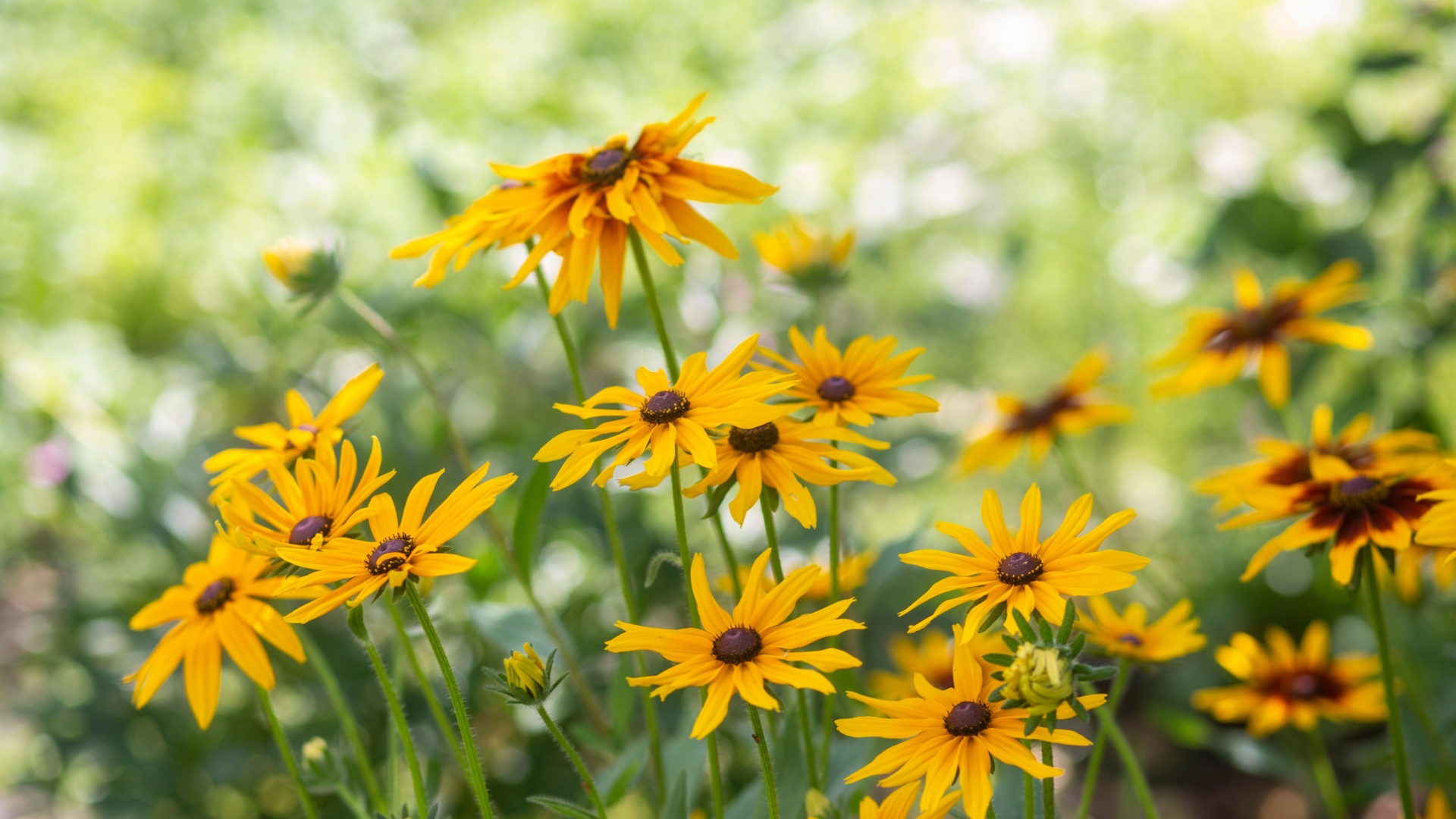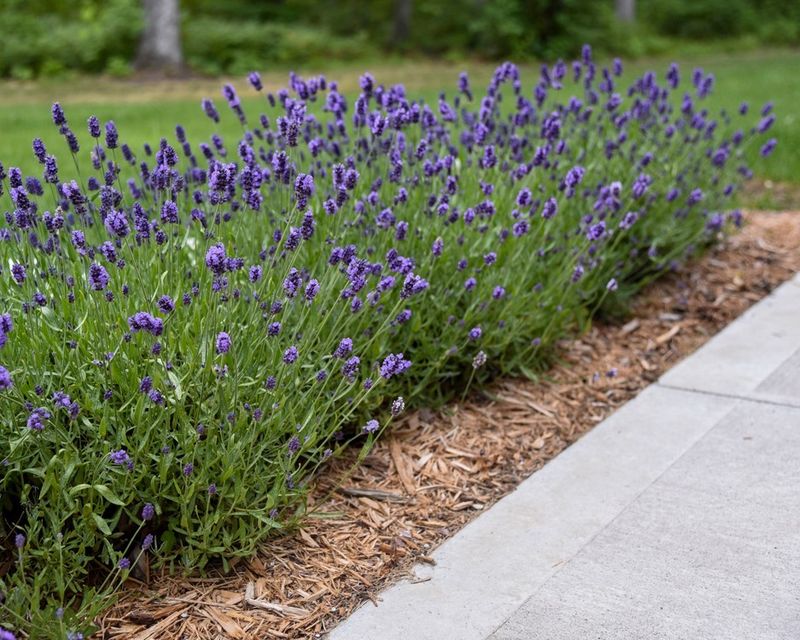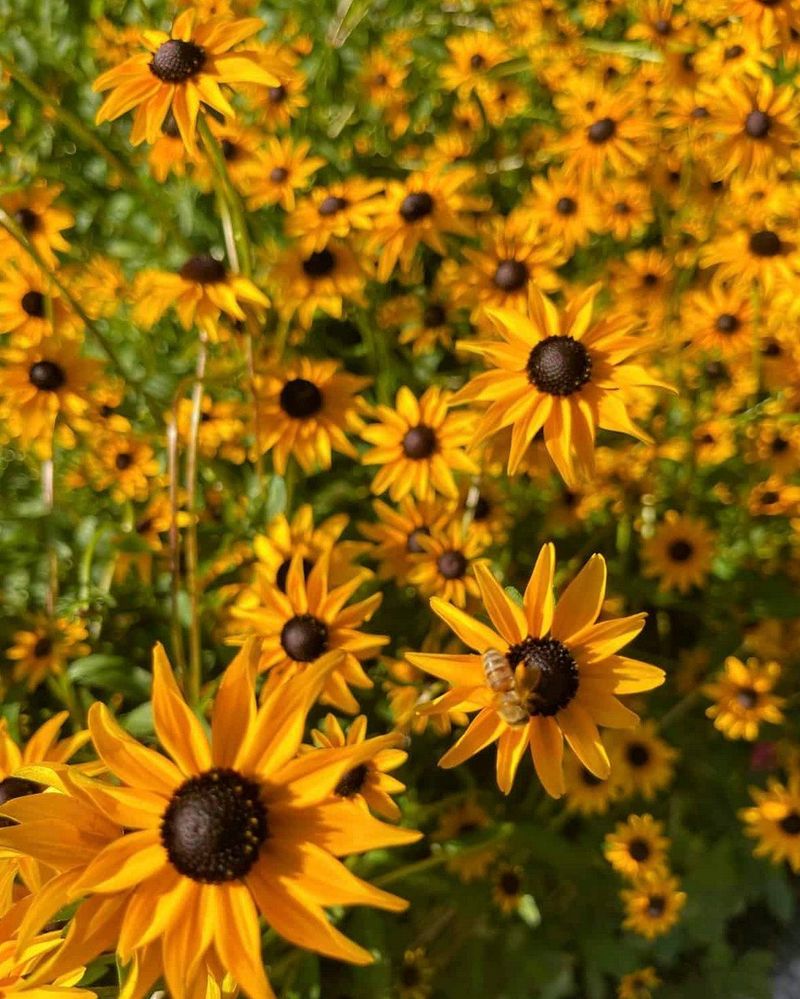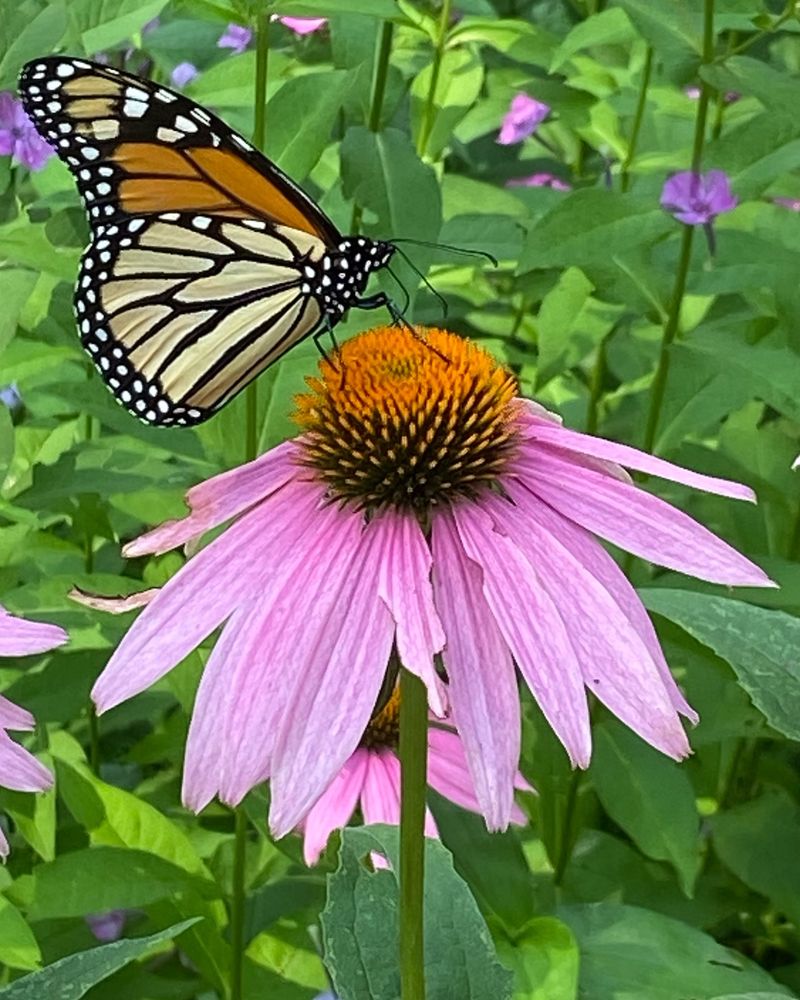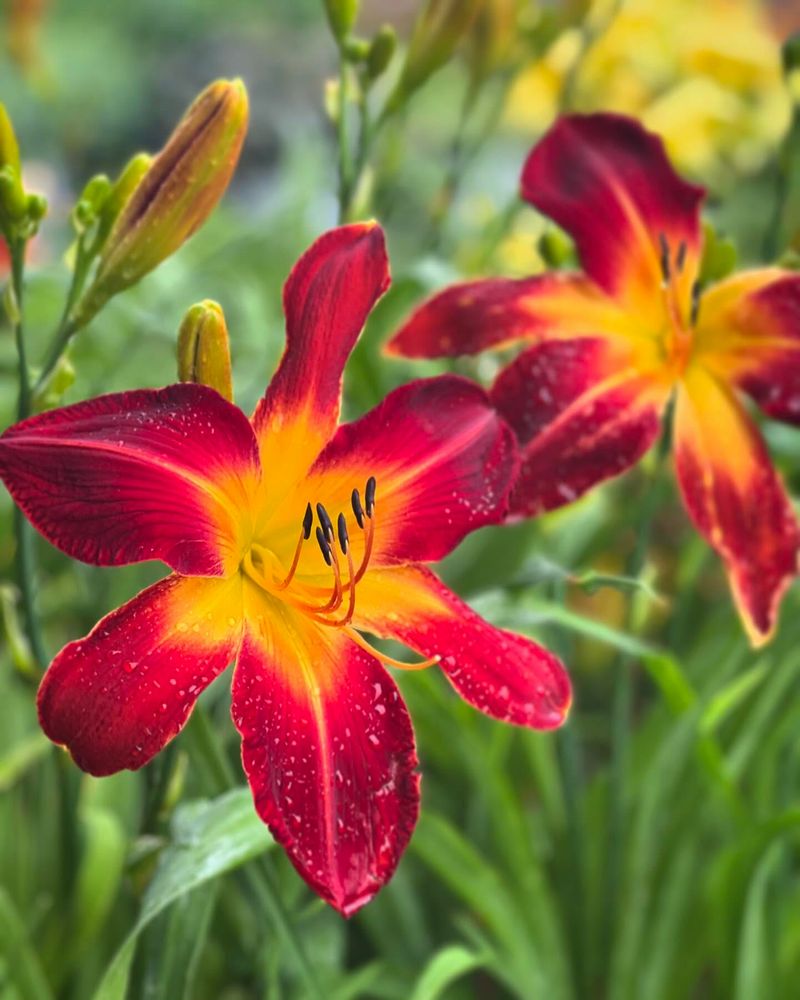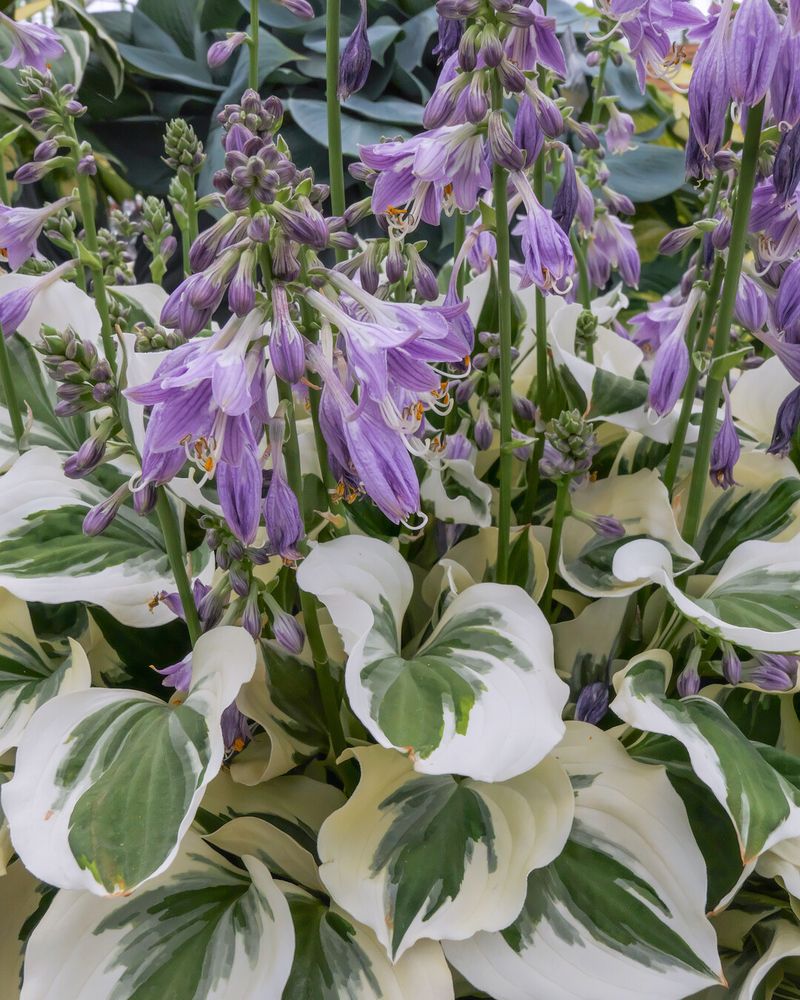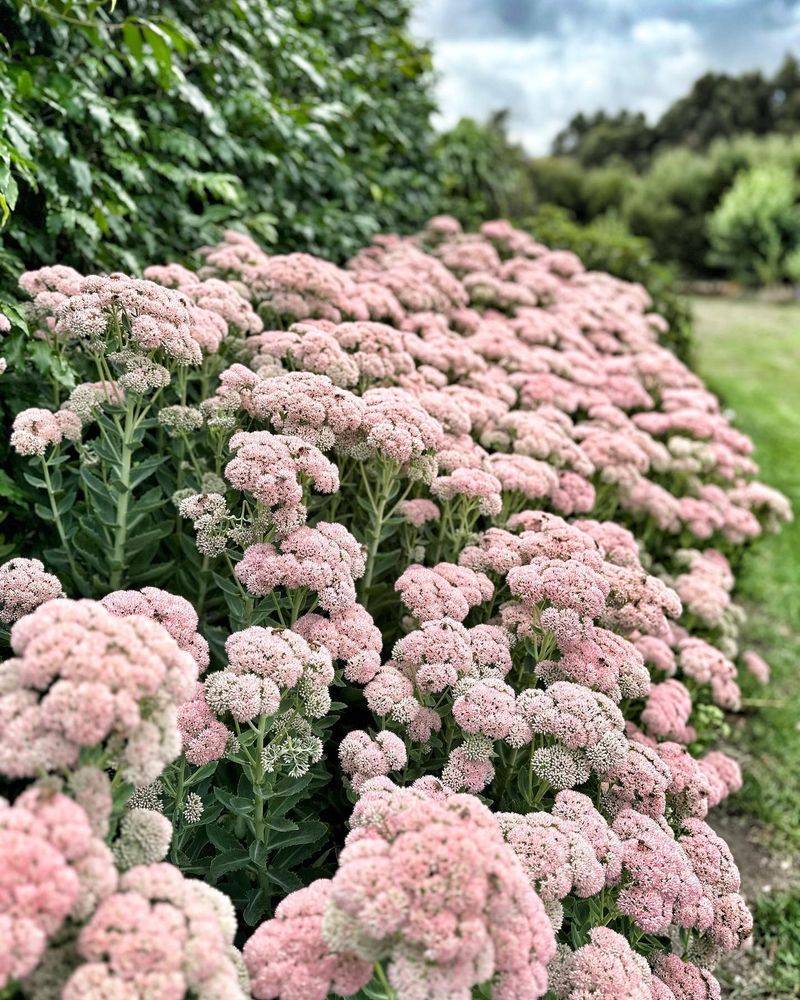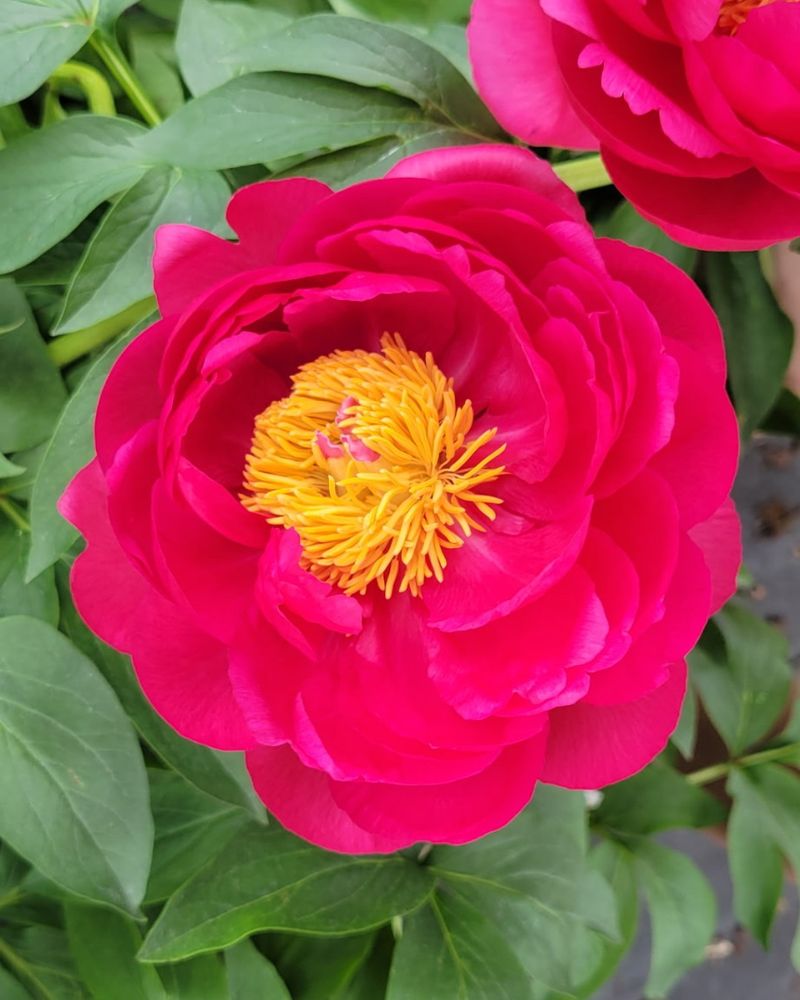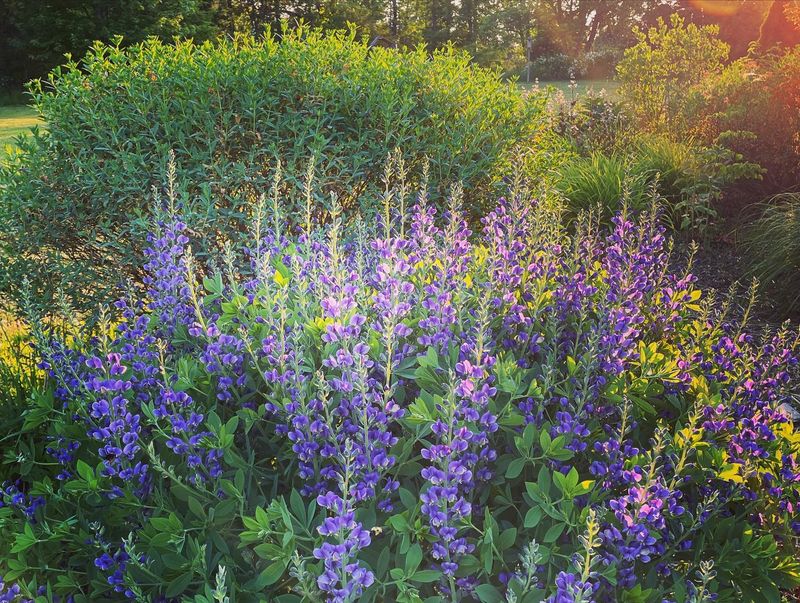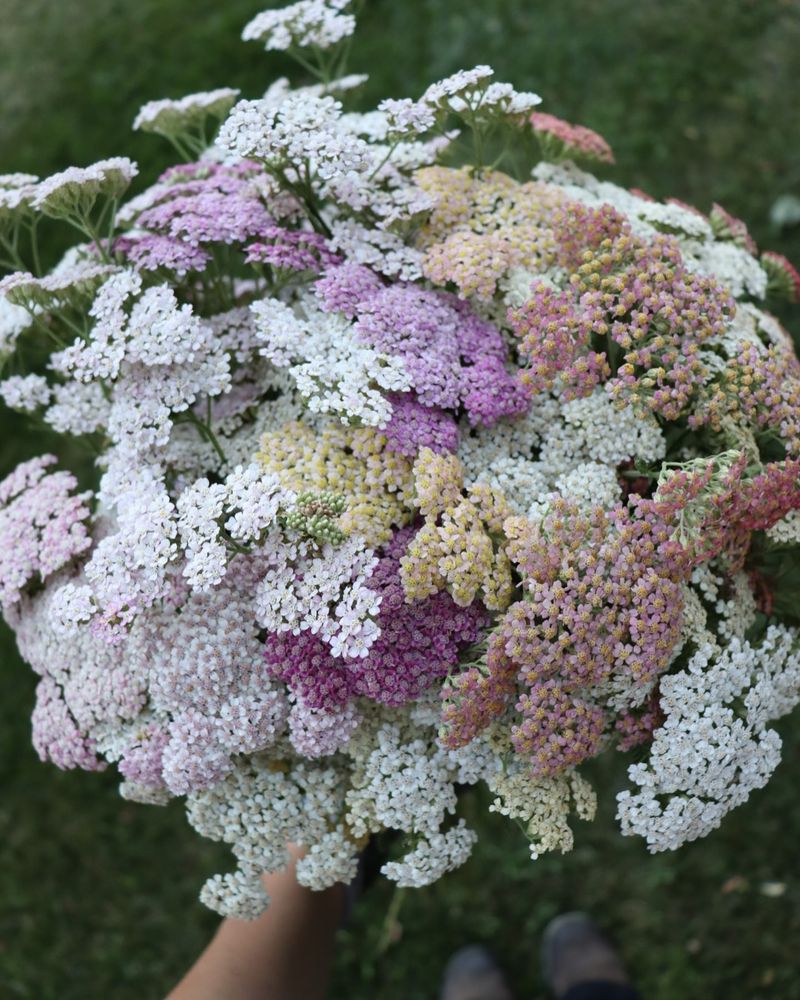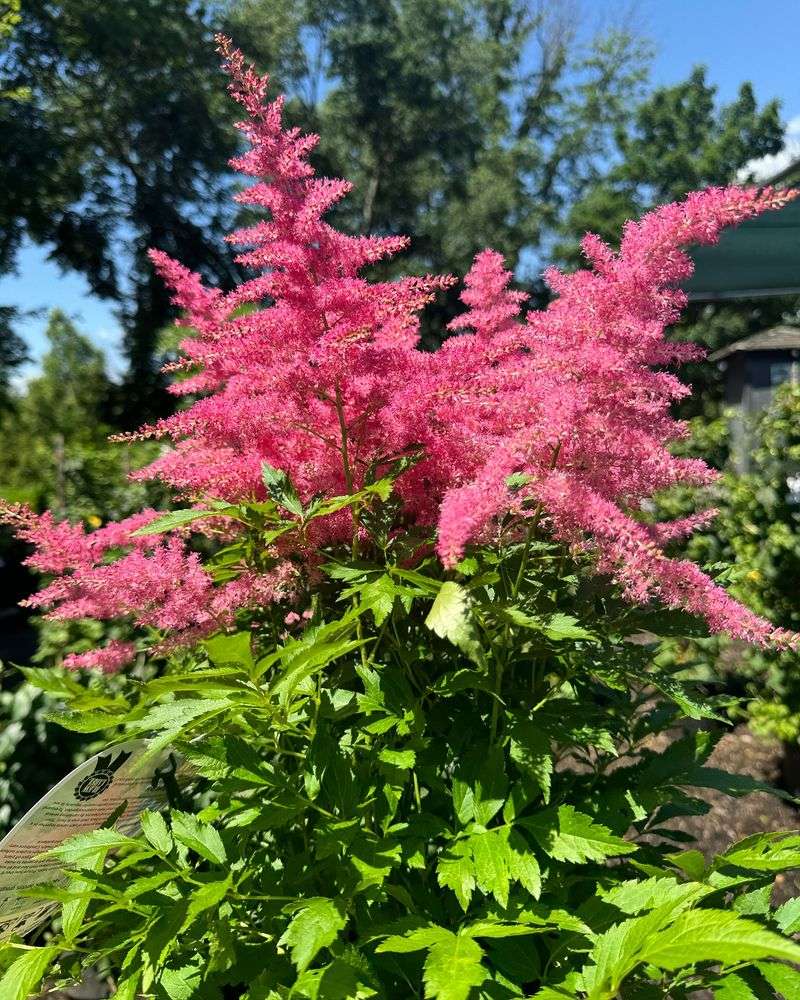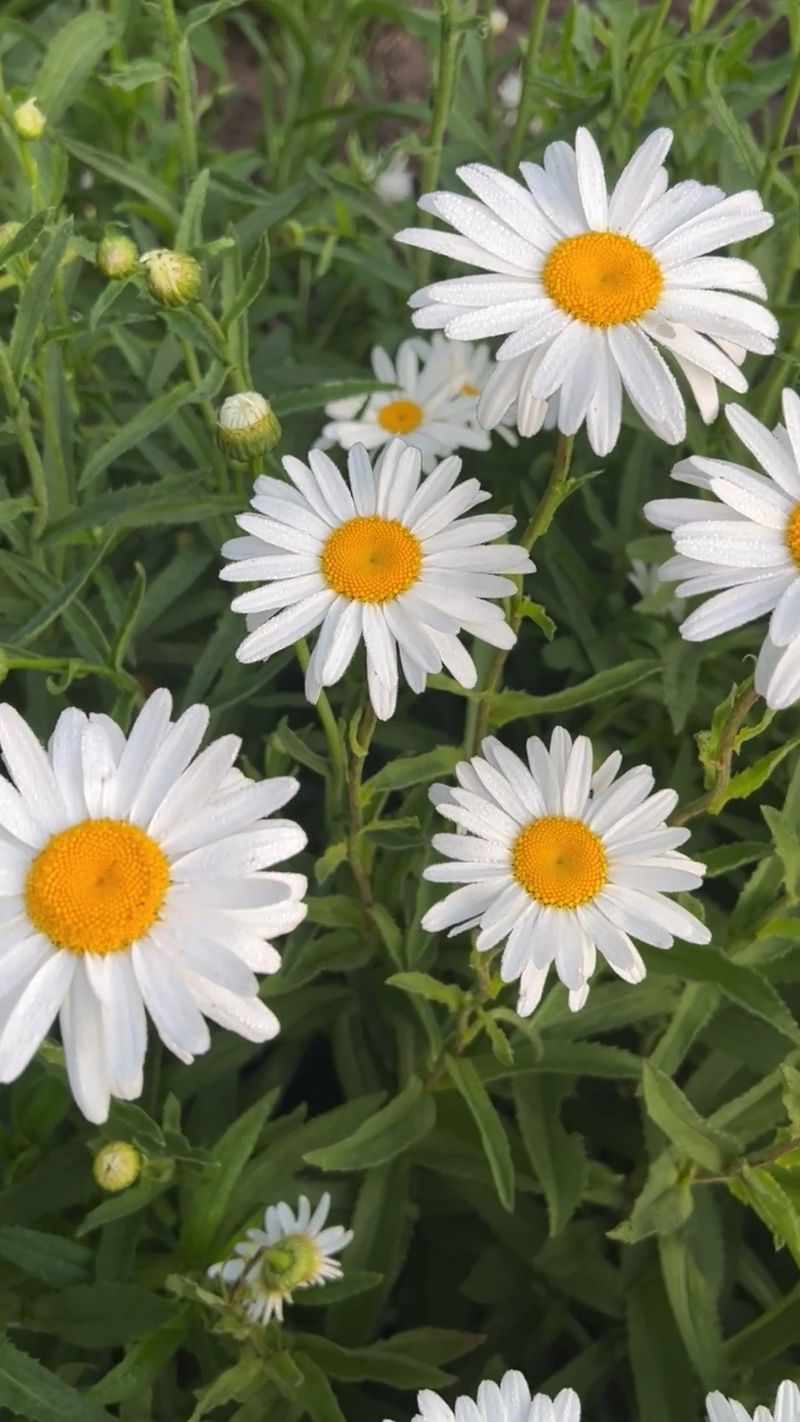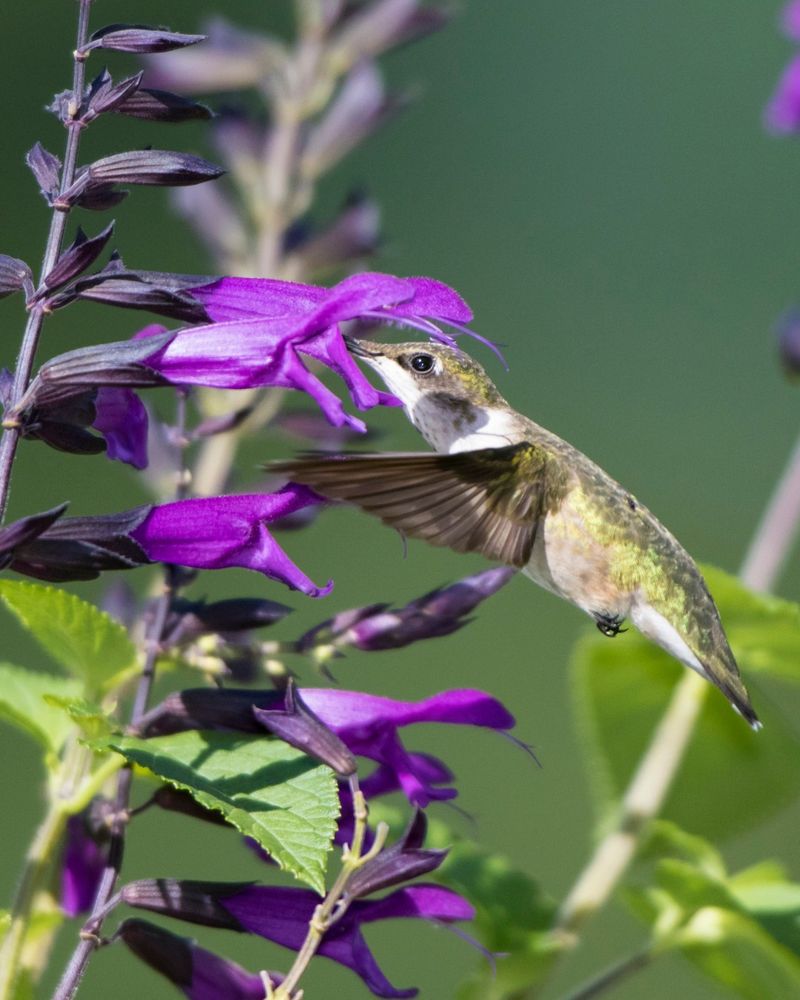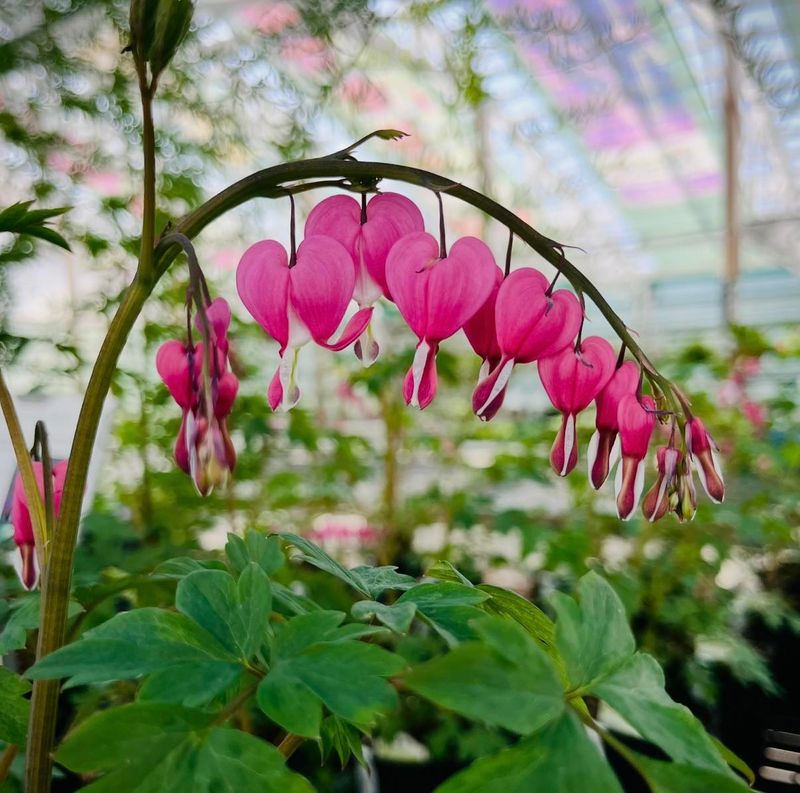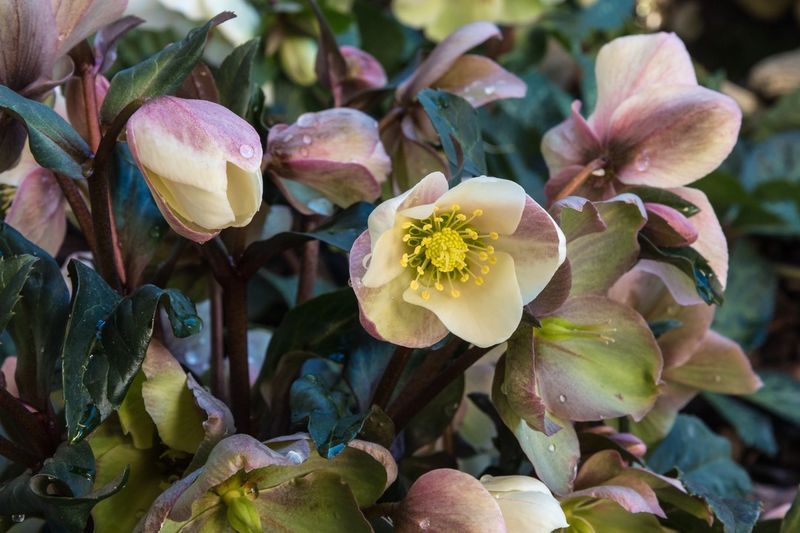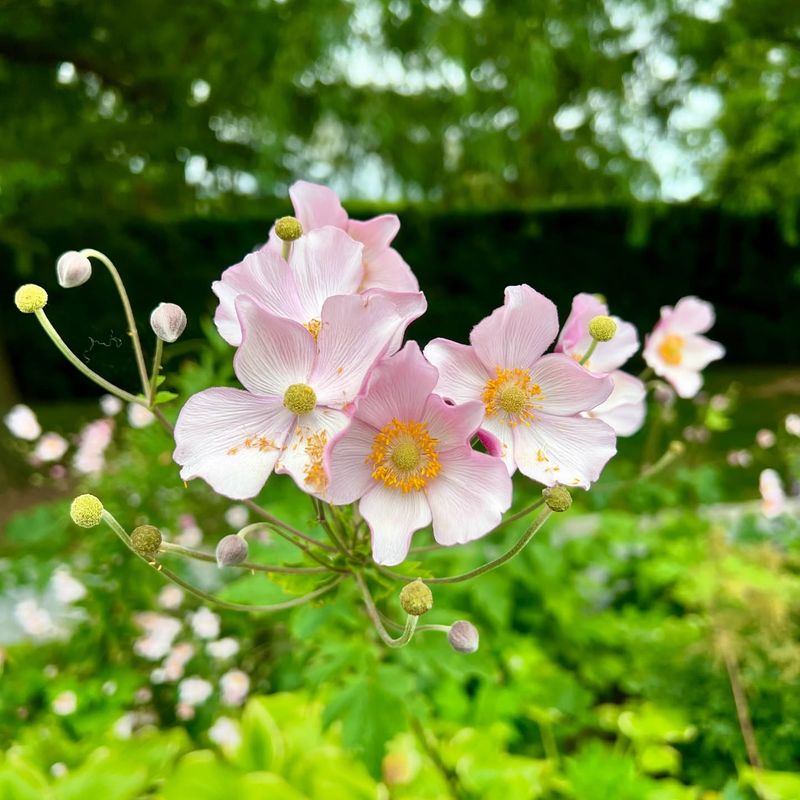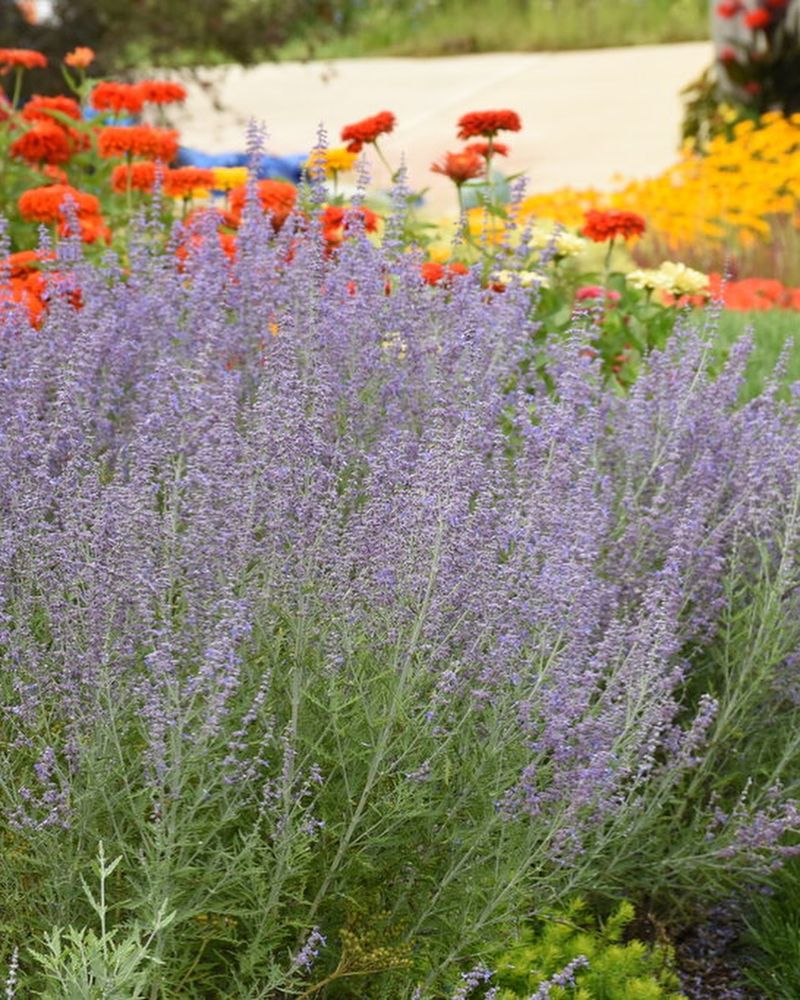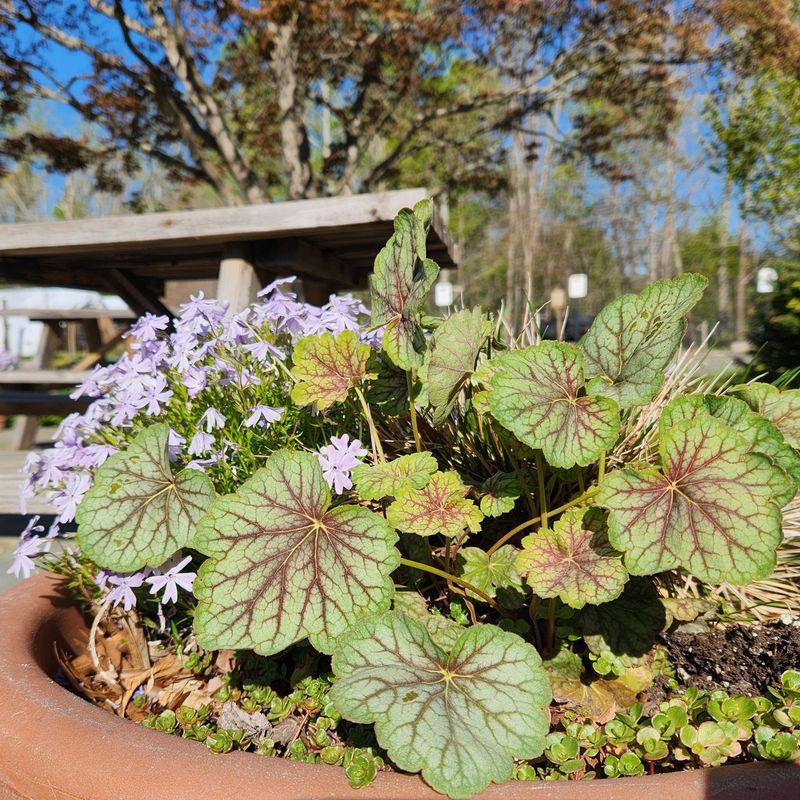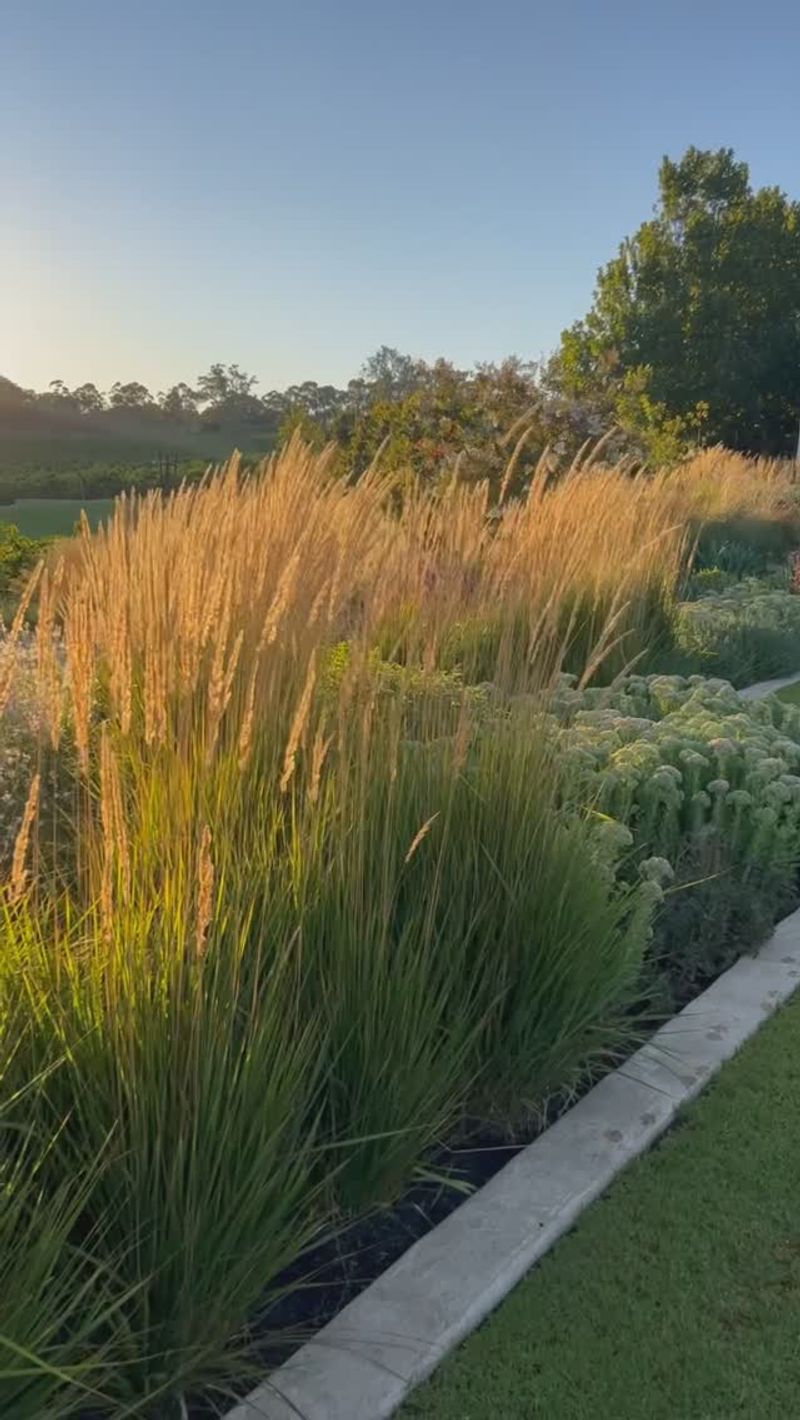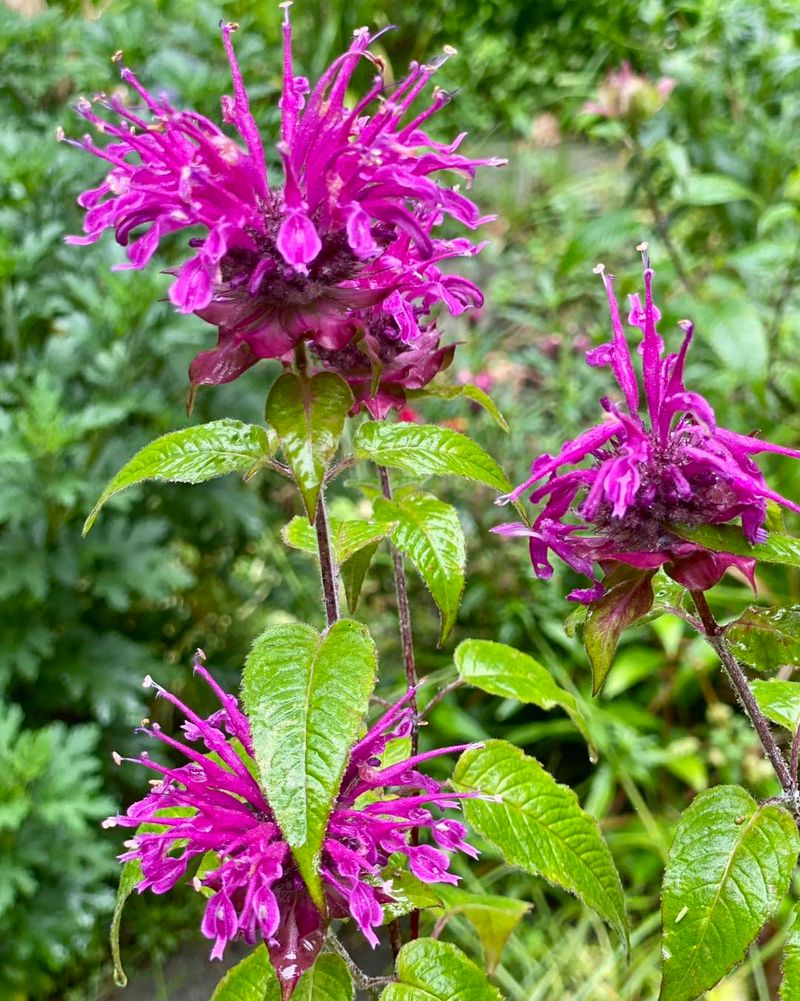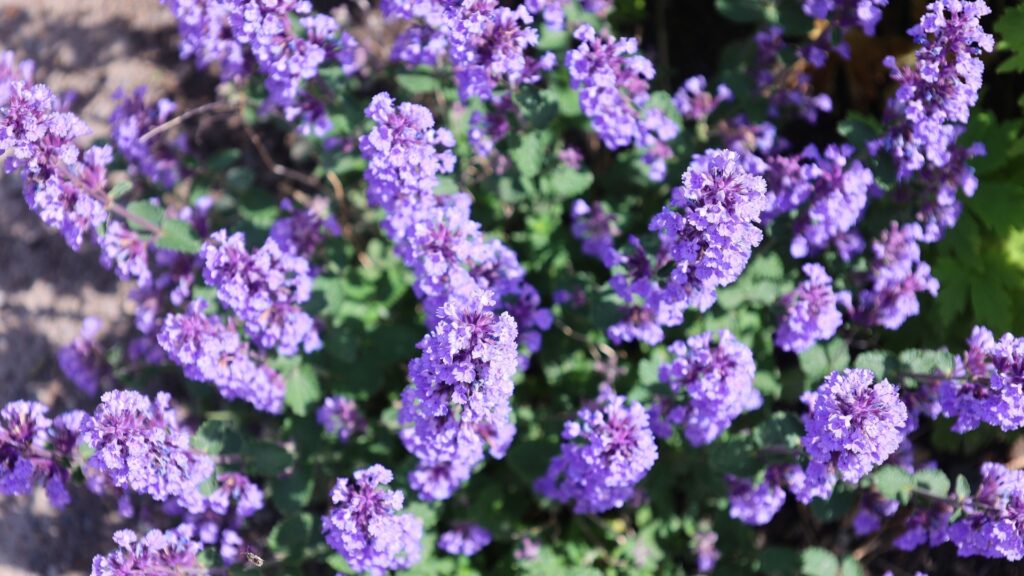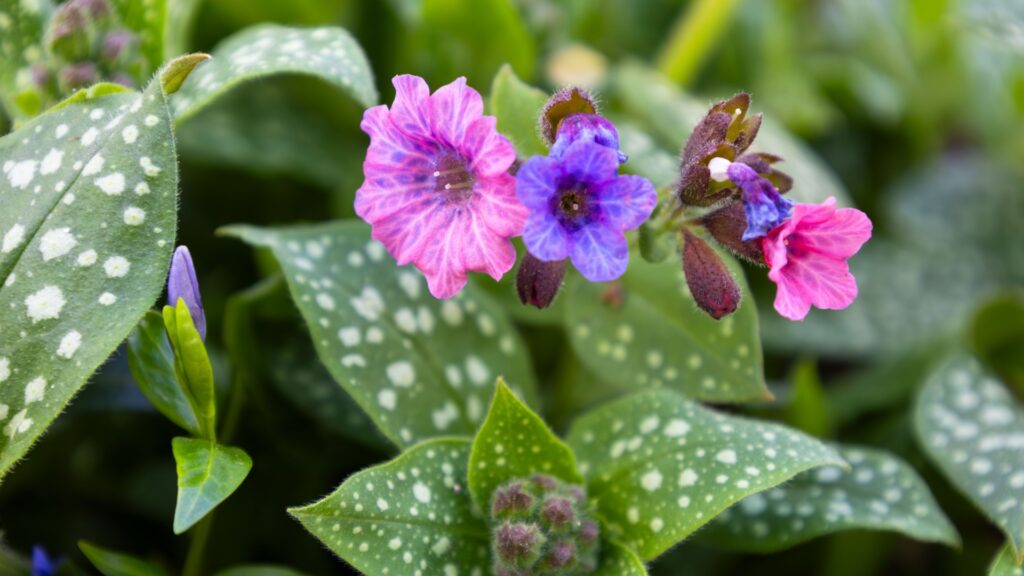Perennials are the backbone of any garden – plant them once, and they return year after year with color, scent, and charm.
From early spring blooms to late-season stunners, they keep the show going with less water and more pollinators.
Here are 16 must-have perennials for every yard, plus 6 bonus picks if you’re ready to branch out. Let’s dig in.
1. Lavender – The Fragrant Multi-Tasker
Nothing beats the calming scent of lavender on a warm summer day. I’ve planted it along my walkway, and visitors always comment on the wonderful smell as they brush past it.
Lavender thrives in sunny spots with well-drained soil. Once established, it needs very little water, making it perfect for dry areas or busy gardeners. The purple flower spikes look stunning in the garden and can be dried for indoor arrangements.
Beyond its beauty, lavender repels mosquitoes and other pests naturally. Harvest the flowers to make sachets, tea, or even baked goods – this plant truly earns its keep in the garden!
2. Black-Eyed Susan – Sunshine On A Stem
Bright yellow flowers with dark centers bring a splash of sunshine to any garden from midsummer through fall. Black-Eyed Susans were the first perennials I ever planted, and they’ve spread to form cheerful colonies throughout my garden beds.
These native wildflowers attract butterflies and birds, who love to feast on their seeds. They’ll grow in almost any soil and can handle both drought and humidity like champions. Plant them in masses for the most dramatic effect.
Cut a few stems for indoor bouquets – they last for days in water and instantly brighten any room. Their carefree nature makes them perfect for beginning gardeners.
3. Coneflower – The Pollinator Magnet
Butterflies can’t resist coneflowers, and neither can I! These sturdy natives, also called echinacea, produce daisy-like blooms in shades from purple to white that last for months in the summer garden.
My garden has several varieties, and they’ve been completely trouble-free for years. They thrive in full sun but tolerate partial shade, and they laugh at drought once established. The seed heads provide winter interest and food for hungry birds.
Many gardeners appreciate coneflowers for their medicinal properties – echinacea has long been used to boost the immune system. Their strong stems rarely need staking, making them a low-maintenance addition to any garden.
4. Daylily – The Indestructible Beauty
Sometimes called the perfect perennial, daylilies have earned their place in gardens through sheer toughness. Each bloom lasts just one day (hence the name), but plants produce buds for weeks, creating a long-lasting display.
Available in nearly every color except true blue, daylilies have helped me transform difficult spots in my yard. They tolerate poor soil, drought, and neglect while still flowering reliably. I’ve divided mine several times to spread them throughout my garden.
Even beginners find success with these forgiving plants. Some varieties are even fragrant or reblooming, extending their season of interest. They pair beautifully with ornamental grasses for a natural, prairie-inspired look.
5. Hosta – Shade Garden Champion
When I moved to a house with lots of shade, hostas became my go-to plants. Their lush foliage comes in countless variations – blue, green, gold, variegated – and sizes from tiny to massive.
These shade-lovers create a tropical feel with minimal effort. Their elegant leaf patterns look good from spring until frost, making them valuable for areas where few plants thrive. Tall flower stalks appear in summer, attracting hummingbirds.
Hostas multiply over time, allowing you to divide and spread them throughout shady spots. The only downside? Deer and rabbits find them tasty. I’ve had success protecting mine with simple wire cages until they’re established.
6. Sedum – The Low-Maintenance Succulent
Sedum ‘Autumn Joy’ has been growing in my garden for over a decade without any special care. Its fleshy leaves and stems store water, making it incredibly drought-resistant and perfect for busy gardeners.
Starting with broccoli-like buds in summer, the flower heads gradually open to pink and finally turn coppery-red in fall. Even in winter, the dried flower heads add interest to the garden. Bees absolutely cover the blooms when they’re open!
Plant sedums in poor soil – they actually perform better with less fertility. Many varieties spread to form an attractive ground cover, while taller types like ‘Autumn Joy’ create structural accents. They’re practically impossible to kill.
7. Peony – The Century Plant
Peonies are garden heirlooms that can outlive their gardeners – some plants have bloomed for over 100 years! Last spring, I added three to my garden, hoping my grandchildren will someday enjoy them.
Their massive, fragrant blooms appear in late spring in shades from pure white to deep red. Though the flowering period is relatively short, their attractive foliage provides structure all season. Plant them where they can remain undisturbed for years.
Contrary to popular belief, ants on peony buds are helpful, not harmful – they protect the developing flowers from pests. For best results, plant peonies in fall with eyes (growth buds) just 1-2 inches below soil level.
8. Baptisia – The Structural Stunner
False indigo (Baptisia) creates an architectural presence in the garden that stops visitors in their tracks. When I planted my first one, I had no idea it would grow into such an impressive specimen – now nearly 4 feet tall and wide!
Lupine-like flower spikes in blue, purple, yellow or white rise above blue-green foliage in late spring. After flowering, interesting seed pods develop, rattling in the breeze. The plant forms a substantial, shrub-like clump that needs no staking.
Native to North America, baptisia has deep roots that help it survive drought. It’s extremely long-lived and resents transplanting, so choose its location carefully. Its only request? Full sun for best flowering.
9. Yarrow – The Butterfly Buffet
Flat-topped flower clusters make yarrow both distinctive and useful in flower arrangements. My garden includes several colors – the classic yellow, soft pink, and pure white – all equally beloved by butterflies.
Yarrow’s fern-like foliage stays attractive all season and releases a pleasant scent when brushed against. It grows in almost any soil, laughs at drought, and spreads at a manageable rate. The flowers dry beautifully for winter bouquets if cut at their peak.
Ancient warriors once used yarrow to stop bleeding on battlefields – its botanical name, Achillea, references the warrior Achilles. In my experience, it’s one of the toughest, most reliable perennials for hot, sunny spots where other plants struggle.
10. Astilbe – The Shade Sparkler
Feathery plumes of flowers bring color to shady corners where few plants bloom. I’ve lined my north-facing garden path with astilbes, and their fluffy flowers seem to glow in the dim light.
Available in shades of pink, red, lavender and white, astilbes combine beautifully with hostas and ferns. They prefer moist soil, making them perfect for areas that stay damp. The flower plumes dry on the plant and provide winter interest if left standing.
Unlike many shade plants grown mainly for foliage, astilbes offer both attractive fern-like leaves and showy blooms. They’re also deer-resistant, a huge plus for gardens in areas with heavy deer pressure.
11. Shasta Daisy – The Classic Charmer
Few flowers say “summer” quite like the simple, cheerful Shasta daisy. Their pure white petals surrounding golden centers create a clean, classic look that complements any garden style. They’ve been brightening the corner of my yard for years without any special attention.
Excellent for cutting, these daisies last for days in vases. Deadheading spent blooms encourages more flowers throughout the summer. They grow in neat clumps that rarely need dividing and attract beneficial insects to the garden.
Plant them in full sun for best results. Some newer varieties offer frilly petals or shorter heights, but I prefer the original tall, single-flowered form for its timeless appeal and sturdy stems.
12. Salvia – The Hummingbird Haven
Hummingbirds zoom straight to the spiky purple flowers of perennial salvias in my garden each summer. These European natives (different from annual red salvias) produce waves of blooms from late spring through fall if deadheaded regularly.
Drought-tolerant and deer-resistant, salvias thrive in hot, sunny locations. Their aromatic foliage deters many garden pests naturally. After a few years, plants can be divided in spring to create more – I’ve filled several garden beds this way without buying additional plants.
Varieties like ‘May Night’ and ‘Caradonna’ have been garden workhorses for me, returning reliably each year. For a designer look, pair salvias with ornamental grasses and yellow flowers like coreopsis.
13. Bleeding Heart – The Romantic Early Bloomer
Heart-shaped pink or white flowers dangle from arching stems in early spring, creating a romantic woodland feel. My bleeding heart emerges when most perennials are just waking up, providing much-needed color after winter.
This old-fashioned favorite thrives in partial shade and moist, rich soil. The fern-like foliage complements the unique flowers perfectly. Be aware that plants typically go dormant in summer heat – I’ve planted hostas nearby to fill the gap when they disappear.
The traditional pink form is most common, but white varieties offer a ghostly beauty in shady corners. They naturalize well under deciduous trees, getting sun in spring before the leaves emerge and shade during summer.
14. Bearded Iris – The Rainbow Maker
Ruffled blooms in every color imaginable make bearded irises the peacocks of the perennial garden. The first iris I planted came from my grandmother’s garden, and I’ve been collecting different varieties ever since.
These May-blooming beauties feature distinctive upright petals (standards) and drooping petals (falls) in striking color combinations. Their sword-like foliage provides structure even when not in bloom. Most have a sweet fragrance that perfumes the garden.
Plant iris rhizomes just at the soil surface in full sun. Every 3-4 years, dig and divide them to maintain vigorous blooming. Their drought tolerance makes them ideal for hot, dry spots where other perennials struggle.
15. Hellebore – The Winter Wonder
When most gardens lie dormant, hellebores burst into bloom, sometimes even through the snow! I discovered these remarkable plants after moving to a colder climate and now consider them essential for winter interest.
Also called Lenten roses, hellebores produce cup-shaped flowers in shades of white, pink, purple, and green that last for months. Their leathery, evergreen foliage looks good year-round in shady spots. They’re completely deer-resistant – a rare quality in shade perennials!
Once established, hellebores need little care beyond removing old leaves in late winter to showcase the blooms. They self-seed gently, creating natural colonies over time. Each seedling may show slightly different colors – a delightful surprise!
16. Japanese Anemone – The Late-Season Star
Just when most perennials are fading, Japanese anemones burst into bloom with pink or white poppy-like flowers dancing on tall stems. I planted a small clump five years ago, and they’ve now created a magnificent fall display that takes my breath away.
These elegant plants prefer partial shade and consistent moisture. Their rounded leaves form attractive mounds before the flowers appear in late summer. They combine beautifully with ornamental grasses and late-blooming sedums.
Given time, Japanese anemones will spread to form impressive colonies. They’re worth the wait – few perennials offer such fresh-looking flowers so late in the growing season.
17. Russian Sage – The Drought-Defying Cloud
From a distance, Russian sage appears as a purple cloud floating above the garden. Up close, tiny lavender-blue flowers cover silver-gray stems from midsummer until frost. Last summer, when my garden faced severe water restrictions, Russian sage continued performing beautifully.
This sun-lover thrives in poor soil and actually performs better without fertilizer or pampering. The aromatic foliage deters deer and rabbits effectively. Cut plants back hard in early spring for the best shape and most flowers.
Despite its name, Russian sage isn’t a true sage but a relative. Its airy texture makes it an excellent companion for plants with bolder forms like coneflowers and black-eyed Susans.
18. Coral Bells – The Foliage Superstar
Who needs flowers when leaves look this good? Coral bells (Heuchera) offer foliage in colors ranging from silver and lime green to deep purple, amber, and nearly black. My collection started with just one plant and has grown to include seven varieties that create year-round interest.
Tiny bell-shaped flowers appear on tall, wiry stems, attracting hummingbirds, but the colorful leaves are the main attraction. Most varieties perform best in partial shade, though newer selections tolerate more sun. They prefer well-drained soil and make excellent container plants.
Evergreen in mild climates, coral bells provide winter interest when many perennials disappear. They combine beautifully with ferns, hostas, and other shade-lovers.
19. Ornamental Grasses – The Movement Makers
Nothing adds movement to a garden quite like ornamental grasses swaying in the breeze. After adding miscanthus and feather reed grass to my perennial beds, the whole garden came alive with a new dimension of texture and sound.
Most ornamental grasses reach their peak in late summer and fall, when their feathery plumes catch the low autumn light. They range from short 12-inch mounds to dramatic 8-foot specimens. Nearly all prefer full sun and can handle drought once established.
Leave grasses standing for winter interest, then cut them back in early spring before new growth emerges. They’re virtually pest-free and require almost no care beyond this annual haircut.
20. Bee Balm – The Pollinator Paradise
Crowned with whorls of spiky, tubular flowers in red, pink or purple, bee balm creates a fireworks display in the summer garden. As its name suggests, bees can’t resist it – and neither can butterflies and hummingbirds, making my patch a wildlife hotspot from July through September.
A member of the mint family, bee balm spreads by underground runners to form expanding colonies. The aromatic foliage smells like a blend of mint and citrus when crushed. Most varieties prefer moist soil and good air circulation to prevent powdery mildew.
Native to North America, bee balm (Monarda) fits perfectly in cottage gardens, meadow plantings, and pollinator gardens. Newer varieties offer improved mildew resistance and more compact growth habits.
21. Catmint – The Effortless Edger
Few perennials combine grace and toughness like catmint. I first planted it along a sunny border where other plants struggled, and it’s been thriving ever since – spilling over the edge with soft gray-green foliage and waves of lavender-blue flowers.
Catmint (Nepeta) blooms from late spring into summer and often reblooms if trimmed back. Bees, butterflies, and even hummingbirds flock to it, while deer and rabbits turn up their noses. It’s incredibly drought-tolerant once established and shrugs off pests and poor soil.
This airy beauty pairs well with roses, salvia, and ornamental grasses. Its relaxed form softens edges and pathways effortlessly, giving the garden a relaxed, cottage-style charm. I’ve started adding it to containers, too – it never disappoints.
22. Lungwort – The Spring Groundcover Gem
When spring is just getting started, lungwort (Pulmonaria) quietly lights up shady spots with clusters of pink and blue flowers on low stems. I was drawn to it first for the blooms, but I stayed loyal because of the stunning foliage – often silver-speckled or even entirely silvery.
This early bloomer thrives in part to full shade and prefers moist, well-drained soil. Its fuzzy leaves are unappetizing to deer and slugs, making it a reliable groundcover where many others struggle. Once the flowers fade, the foliage continues to shine throughout the season.
Lungwort spreads slowly, creating tidy clumps that are easy to divide and share. I’ve tucked it beneath hydrangeas and alongside hostas for a layered, textural look. It’s an underappreciated gem that brings both subtle beauty and practical value to the spring garden.

